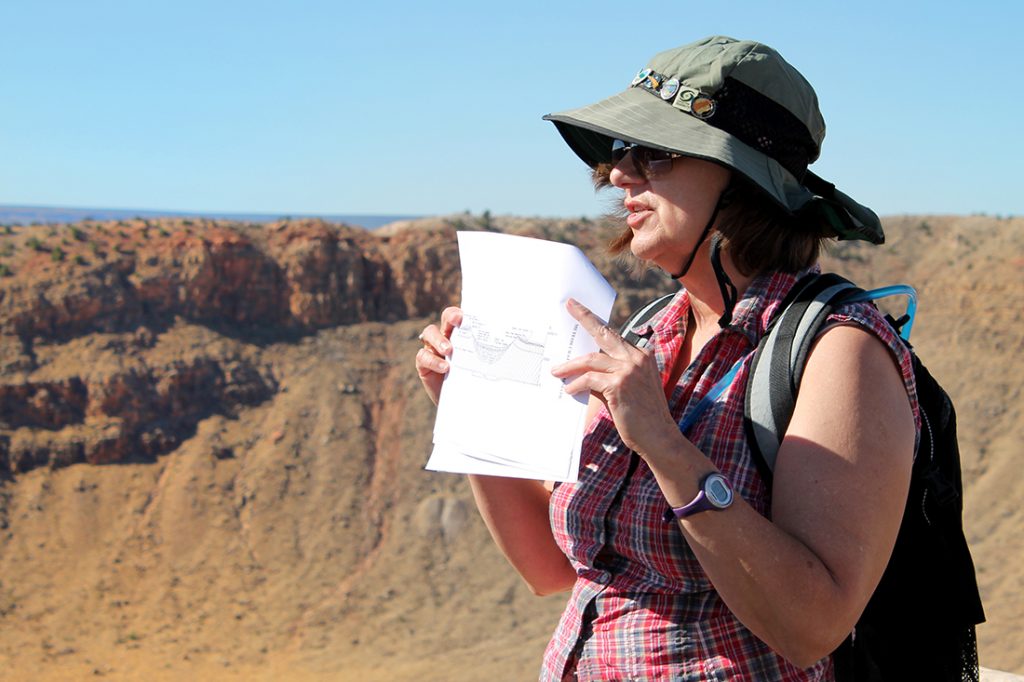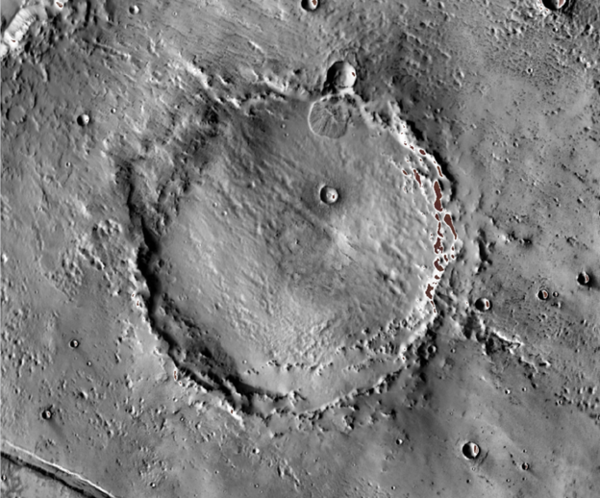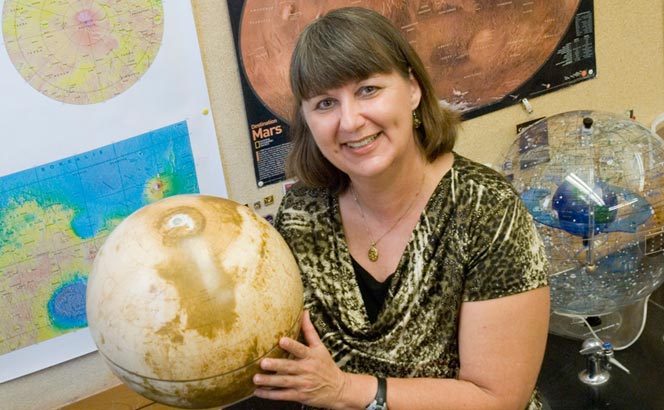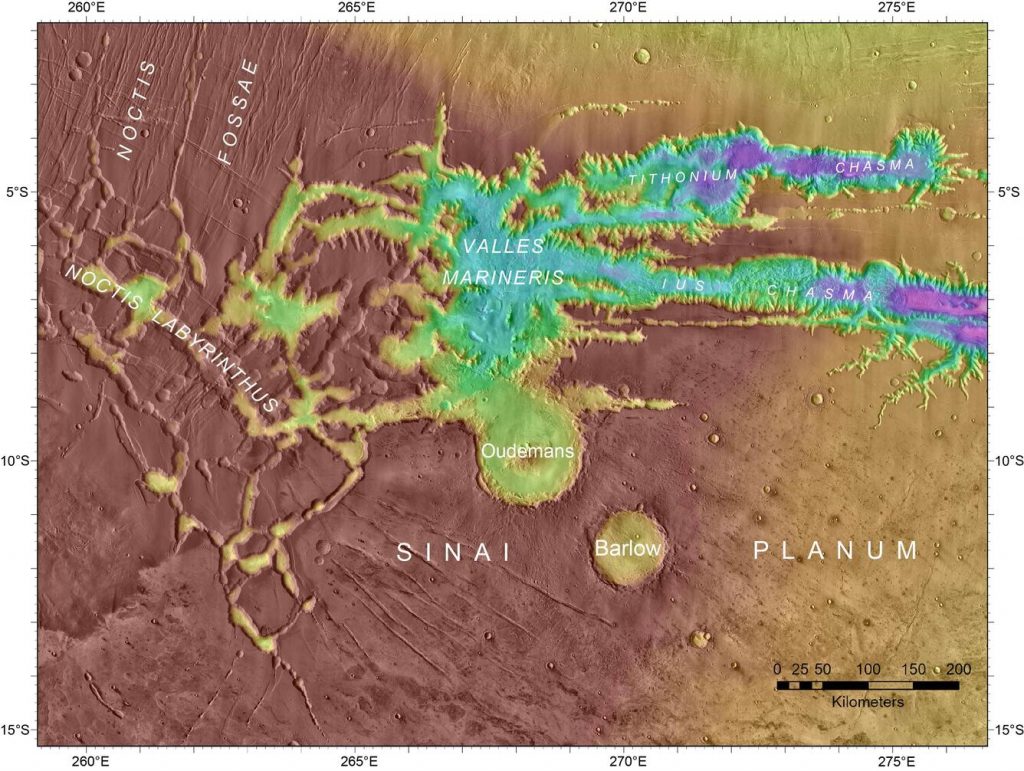The International Astronomical Union announced this fall that a prominent crater on Mars would be named after Nadine Barlow, a professor of planetary science and chair of the Department of Astronomy and Planetary Sciences at NAU until her death from cancer in 2020.

Her colleagues said it was a fitting honor for Barlow, a noted leader in the field of Mars crater studies and frequent collaborator with astrogeologists in the U.S. Geological Survey, many of whom were her students at one time or another. Joseph Boyce of the Hawai‘i Institute of Geophysics and Planetology, University of Hawai‘i at Mānoa, who started the naming process, noted Barlow’s numerous scientific discoveries that advanced the field’s understanding of Mars erosion history, impact crater ejecta dynamics and crater excavation physics. She also produced the first global Martian impact craters catalog in the late 1990s and developed a crater morphologic classification system in 2000 that has been the standard for a quarter century.
Additionally, one of Barlow’s highest priorities was supporting undergraduate research, and she was heavily involved with the national council on undergraduate research in addition to her research and collaborative work.
“Nadine was a true gem in the field of planetary science—a hard and focused worker, dedicated teacher and colleague, a warm personality, and a good friend and mentor,” said Mark Salvatore, an associate professor and associate chair in the Department of Astronomy and Planetary Science. “I first became associate chair under Nadine’s leadership, and she made sure that I was involved in high-level conversations and decisions, whether I liked it or not! Nadine always led by example, and that always gave me confidence when following her lead.”
Barlow the crater is about 87 kilometers in diameter and is located in the northern portion of Sinai Planum on Mars.

Barlow’s groundbreaking work on impact craters looked at the differences in structures formed when an asteroid hits a planet and how atmosphere, the planet’s crust and other factors affect the crater. A big part of her work focused on the differences between craters on different types of planets. Mercury and Mars, for example, have a similar gravity but have different surface strengths, are different sizes and have different geologic processes, so while craters on both planets form in the same way, a dozen factors make the end result different. Even more unusual factors are at work when it comes to craters on Earth, a planet with strong gravity, a significant atmosphere, lots of known weather conditions and 7 billion humans.
Read what USGS astrogeologists said of Barlow’s contributions to the field.
“I joined the NAU Department of Astronomy and Planetary Science under Dr. Barlow’s leadership and entered right into research with the USGS through a partnership with NAU and Astrogeology,” said USGS astrogeology physical scientist Lori Pigue, who was part of the naming process. “I don’t think I would be in my position if I hadn’t been able to explore this career path and work with this program so early in my career, which was a direct result of the work Nadine put in with the USGS and other collaborators.”

For more information, please see the Barlow feature name page in the Gazetteer of Planetary Nomenclature, which provides access to the database of more than 16,000 IAU-approved planetary feature names.



